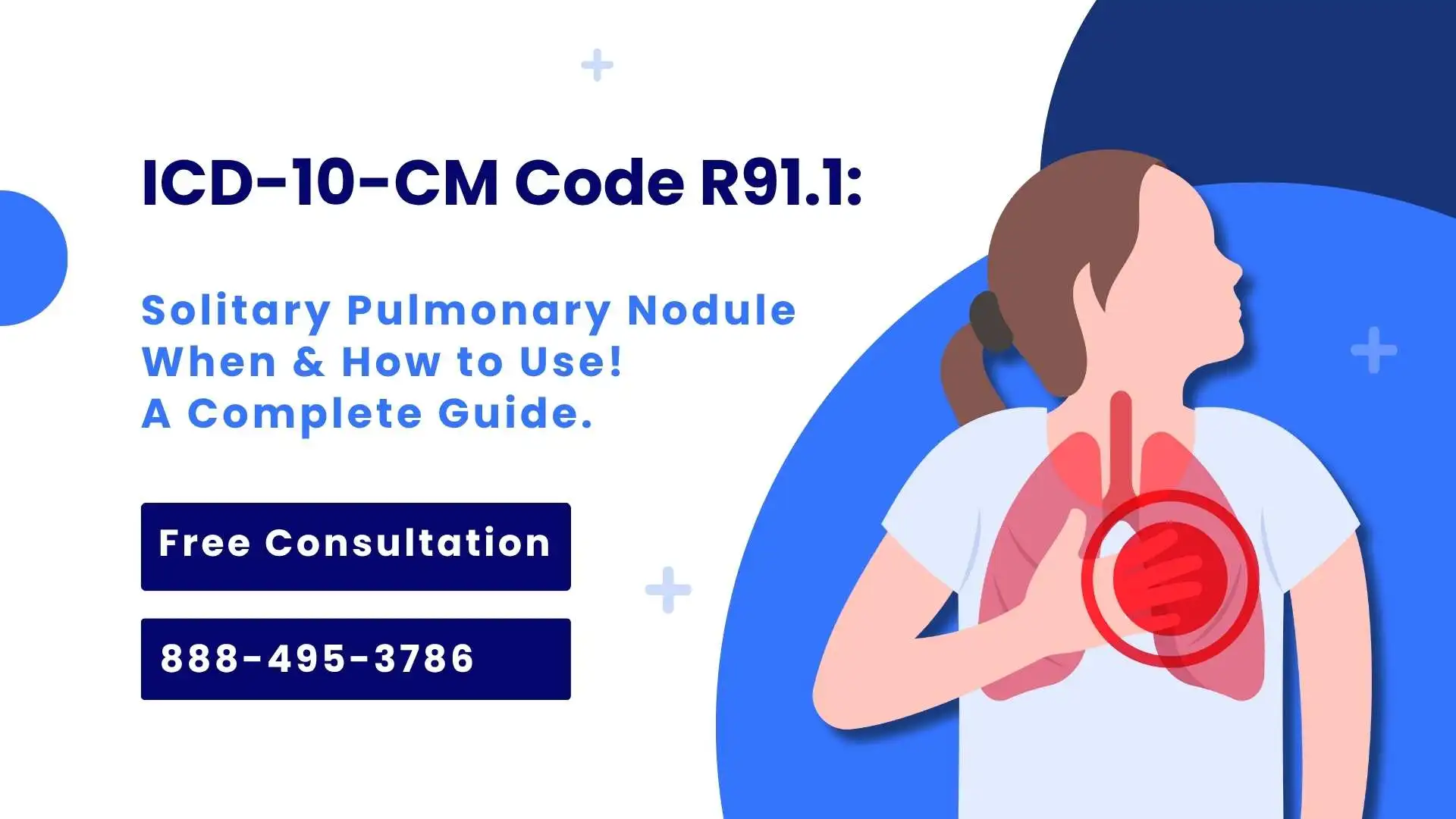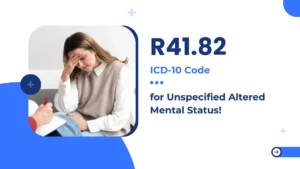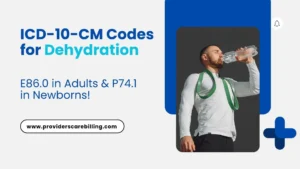Did you know that “Lung nodules are diagnosed in more than 1.6 million people in the United States each year”
One of the most common incidental findings during the conduct of imaging studies in the United States is pulmonary nodules, which may require an ICD-10-CM code R91.1 for proper documentation. According to the information that the American Thoracic Society gives, over half of all adults 50 and older will experience a nodule in their lifetime, and they are detected incidentally when undergoing chest computed tomography (CT) scans or X-rays.
However, from a medical billing perspective, a “small dot” on the lung can become quite an issue, particularly if ICD-10 code R91.1 is either mishandled or under-documented.
What is the ICD 10 code of a pulmonary nodule?
A solitary pulmonary nodule is coded medically as R91.1, which is a single abnormal oval or round swelling on the lung that has been diagnosed most commonly through imaging, such as a chest X-ray or a CT scan. This code is utilized by healthcare professionals to record and monitor the diagnosis of patients, to both charge and treat patients by the medical practitioners.
Code Details:
- Code: R91.1.
- Description: Solitary pulmonary nodule.
- This symptom code falls under the category of abnormal respiratory system findings.
- Used in radiology, pulmonology, primary care, and cancer.
- Billable: Yes.
A 62-year-old man was undergoing a mild shortness of breath through a radiology clinic in Dallas; a chest CT was run. In the scan, there had been a single 8mm nodule. In the report, the radiologist utilized ICD-10 R91.1, whereas the coder utilized a neoplasm code.
Result?
The reason led to the denial of the claim because of the discrepancy between the diagnosis and the imaging indication. The clinic has missed more than 12K reimbursements due to these types of errors in a couple of weeks of such activities.
After the team just made a few modifications to their coding to reflect incidental findings in the correct way using R91.1 and matched it with procedure codes (such as CPT 71250), their claim acceptance jumped to 98 percent.
In some cases, such as when thyroid dysfunction is suspected alongside pulmonary findings, it’s important to review related conditions like hypothyroidism, coded under E03.9, which may contribute to the patient’s overall health status.
Symptoms, signs, and abnormal clinical and laboratory findings
1. Excessive Nodule: The individual must have a solitary nodule in the lung instead of various masses and nodules to avoid confusion with nonspecific abnormal findings on diagnostic imaging.
2. Nodule Size: The average size of a nodule is 3 to 30 mm in diameter, which can be classified under the ICD-10-CM code for solitary pulmonary nodule. There can be cases of the need for different diagnostic codes for large masses and reserving different categories in case of small ones.
3. Radiology evidence: The nodule should be identified using radiological exams such as a chest X-ray or CT scan, where the distinctive and solitary nodule is clearly visible.
4. Asymptomatic: Single pulmonary nodules are often asymptomatic and incidentally discovered when imaging due to some other reason. However, in case of present symptoms, they should not attribute them to the nodule itself.
5. No Signs of Malignancy: Imaging earlier in the course must not exhibit any clear evidence of malignancy, including spiculation, rapid growth, or atypical margins, as all of them necessitate further study and, potentially, a different category of classification.
6. Exclusion of Infectious Causes: Certain diagnostic codes would be required in case the nodule could be traced to infectious procedures like fungal infection or tuberculosis.
7. Patient History Factor: To eliminate the possible history of disease or treatment that could have caused the presence of the nodule, such as a well-known harmless condition or past surgeries, the previous health record of the patient needs to be consulted.
8. Recommendation: A visit that was made using this code may often signal that repeat imaging is necessary to monitor any potential changes in the size or appearance of the nodule over the period of time, because this may signal the possibility of the necessity to perform additional diagnostic procedures.
Primary ICD-10-CM Codes Commonly Associated With R91.1
| Procedure Code (CPT) | Description |
| 71250 | CT Chest without contrast |
| 71260 | CT Chest with contrast |
| 71271 | Low-dose CT scan for lung cancer screening |
| 32405 | Lung biopsy (needle) |
| 31625 | Bronchoscopy with biopsy |
To avoid mismatched documentation, these codes need to be carefully connected with the correct diagnosis code (R91.1).
Why You Need the Right Medical Coding Company
This is especially true for solo practices and small clinics. With an excellent medical coding service, you will:
- Avoid discrepancies in diagnosis and procedure.
- Reduce A/R days with clean claims submissions.
- Conduct coding audits and optimize EMR.
- Keep track of ICD-10 updates and LCD changes
At Providers Care Billing LLC, we’ve assisted radiology and pulmonary clinics in decreasing denial rates by 40% through better documentation and coding for pulmonary nodules.
Let Us Help You Get Paid for Every Pulmonary Nodule You Diagnose
At Providers Care Billing LLC, we specialize in accurate documentation, denial prevention, and end-to-end revenue cycle management for radiology and pulmonary practices across the U.S.
📞 Call Now: 888-495-3786
📧 Email: Info@providerscarebilling.com
Final Thoughts
When you are billing a single pulmonary nodule (code R91.1) or assessing several pulmonary nodules (code R91.8), you have to use the critical diagnosis code lung nodule. The ICD-10 lung nodule and lung mass errors, for example, can result in denials, audits, or financial losses. When choosing an ICD-10 code for a thyroid nodule, coders must choose between E04.1 (nontoxic single nodule) and E04.2 (multinodular goiter). A previously indicated Provider’s Care Billing LLC, is another reputable name in medical billing and coding that accurately captures all pulmonary nodules under relevant ICD-10 codes, to include thyroid nodule diagnosis codes, so they do not get penalized and receive the highest possible payment.
Frequently Asked Questions
- Should R91.1 only be employed in radiology?
No, it is utilized in pulmonology, primary care, and in oncology during the reporting of incidental nodules or watching lesions that are suspicious.
- Does a single pulmonary nodule necessarily point to cancer?
Not so. More than 9 out of 10 nodules less than 8 mm are nonmalignant. This is why proper coding and follow-up are essential.
- Is it possible to apply R91.1 to several lung nodules?
No. If there are multiple lesions, utilize R91.8 or a confirmed diagnosis.
- What about asymptomatic patients?
Even in cases where there are no symptoms, R91.1 can be applied to incidental findings.




